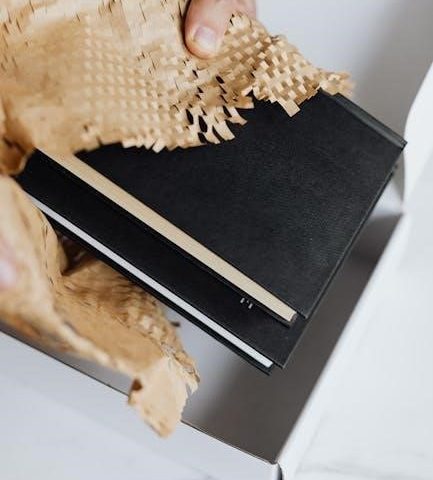How to Turn Off AC Fan Manually: A Step-by-Step Guide

To manually turn off your AC fan, set your thermostat to the off position. Flip the circuit breaker or use the service disconnect switch. For remote models, press the power button to disable operation. Always verify the fan has stopped and ensure the power supply is off before safely performing any maintenance.
Understanding the Thermostat Settings
Understanding your thermostat settings is crucial for manually turning off your AC fan. The thermostat typically has modes such as Cool, Heat, and Off. Setting it to Off should stop the AC from running, including the fan. The fan often has its own settings, like Auto and On. In Auto mode, the fan operates only during cooling or heating cycles. To ensure the fan stops, set the thermostat to Off and the fan mode to Auto.
Using the Power Switch
Locating and using the power switch is a straightforward method to turn off your AC fan manually. For central air conditioning systems, there is typically a dedicated power switch located near the outdoor unit. This switch is often protected by a flip-up cap and may be attached to the wall or the AC cabinet. Flipping this switch to the “Off” position will disconnect power to the unit, stopping both the compressor and the fan.
For window or split AC units, the power switch is usually found on the unit itself or on the plug. Simply switching it off will halt the fan and cooling operation. Ensure the switch is fully disengaged to prevent any residual power. This method is effective for immediate shutdown without adjusting thermostat settings. Always verify that the fan has completely stopped before performing any maintenance or repairs.
Circuit Breaker Procedure
To manually turn off your AC fan using the circuit breaker, start by locating the main electrical panel in your home. Open the panel and identify the circuit breaker associated with your air conditioning system. This breaker is typically labeled or can be identified by switching it off and observing if the AC fan stops running;

Once identified, flip the breaker to the “Off” position. This will disconnect power to the AC unit, causing the fan to stop. For safety, use a voltage tester to confirm there is no electricity flowing to the unit before performing any maintenance. This method ensures a complete power cutoff, making it ideal for servicing or troubleshooting. Always remember to turn the breaker back on when you’re ready to resume operation.

Service Disconnect Switch

Locate the service disconnect switch, often found near the outdoor AC unit and protected by a flip-up cap. This switch allows you to safely disconnect power for maintenance or repairs. Flip the switch to the “Off” position to cut power to the unit. Ensure the fan stops running and verify there’s no electricity present before proceeding with any work. This method is ideal for central air conditioning systems and provides a clear power cutoff point. Always use this switch when servicing the unit to ensure your safety and prevent accidental startups. After completing your task, return the switch to the “On” position to restore power. This step is crucial for safely managing the AC fan’s operation and is recommended for homeowners who need to perform routine maintenance or repairs.
Verifying Power Off
After turning off the AC fan using any method, it is essential to verify that the power is completely off. Start by observing the fan to ensure it has stopped running. Check for any lights or sounds indicating the unit is still operational. For added safety, use a voltage tester to confirm there is no electricity present at the unit or its components. This step is crucial to prevent accidental startups or electrical shocks during maintenance or repairs. Additionally, wait a few minutes to allow any residual power to discharge fully. Verifying power off ensures your safety and prevents potential damage to the system. Always prioritize this step before performing any work on the AC fan or related components. Failure to verify power off can lead to dangerous situations, including electric shock or injury. By following this procedure, you can confidently proceed with any necessary tasks.
Remote Control Options
Many modern air conditioning systems come equipped with remote controls, offering a convenient way to turn the fan off. To manually disable the AC fan using the remote, locate the power button, often labeled as ON/OFF or displaying a power symbol. Point the remote directly at the AC unit, ensuring a clear line of sight, and press the power button once. This action will switch off the unit, including the fan. Some models may require pressing and holding the button for a few seconds to confirm the shutdown. If your remote has a dedicated FAN mode, ensure it is set to OFF or AUTO to stop continuous operation. For units with smart functionality, you can also use a mobile app to disable the fan remotely. Always replace batteries in the remote when they weaken to maintain reliable operation. By using the remote control, you can easily turn off the AC fan without needing to access the thermostat or physical switches, making it a quick and hassle-free option.
Safety Precautions
When manually turning off your AC fan, it is crucial to follow essential safety precautions to avoid accidents or damage. Always ensure the power supply is completely disconnected before performing any maintenance or repairs. Switch off the circuit breaker or remove the fuse from the electrical panel to prevent unexpected startups. Never touch electrical components with wet hands or while standing on a damp surface, as this can lead to electric shocks. If your AC unit is located outdoors, check the surrounding area for any obstructions or debris that could pose a hazard. Keep children and pets away from the unit and its components. When handling the service disconnect switch, wear insulated gloves for added protection. Avoid using benzene or other flammable substances for cleaning, as they can be dangerous. If you are unsure about any step, it is advisable to consult a professional technician. Remember, safety should always be your top priority when dealing with electrical appliances to prevent injuries and ensure a secure working environment.

Additional Tips for Optimization
To optimize your AC fan operation and ensure efficient performance, consider implementing a few additional strategies. Regularly clean or replace air filters to maintain proper airflow and prevent unnecessary strain on the system. Adjust the fan speed settings based on the room’s occupancy and temperature requirements to save energy. For units equipped with smart technology, utilize timers or programmable features to schedule fan operation, ensuring it runs only when needed. If your AC has an “Auto” mode, enable it to allow the system to regulate fan operation automatically, improving efficiency. Additionally, consider upgrading to a smart thermostat for better control over your HVAC system. Always check the fan’s operation after turning it off to ensure it has completely stopped. For older models, consult the user manual for specific optimization tips tailored to your unit. By following these practices, you can enhance the performance, efficiency, and lifespan of your AC fan while reducing energy consumption.
Troubleshooting Common Issues

When manually turning off your AC fan, you may encounter issues such as the fan not turning off or unexpected operation. The most common cause is a stuck relay in the system, which keeps the circuit closed. This can be resolved by checking and replacing the faulty relay if necessary. Another issue could be a faulty thermostat or incorrect thermostat settings, such as being stuck in “fan-only” mode. Ensure the thermostat is set to “off” or “auto” to stop continuous fan operation. Additionally, electrical issues, like a tripped circuit breaker or blown fuse, might prevent the fan from turning off properly. Always inspect the circuit breaker and reset it if needed. If the fan still doesn’t turn off, check the fan limit switch for proper function, as it may be malfunctioning. For outdoor units, ensure the condenser coils are clean, as dirt can cause the fan to run continuously. If issues persist, consult a professional to diagnose and repair any underlying problems. Regular maintenance, such as cleaning filters and inspecting wiring, can help prevent these issues from arising.


